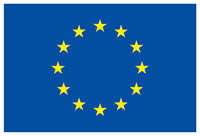On February 27, the “BISON Wilding Railways” event took place as opening of UIC Sustainability Action Week, organised by the Biodiversity and Infrastructure Synergies and Opportunities For European Transport Networks (BISON) project in collaboration with UIC Sustainable Land Use (SLU) Sector. UIC is a key member of the EU-funded BISON project to represent railways and to showcase the best practices of its European members in biodiversity management.
The aim of the event was to scale up the EU-project outcomes for railways by providing an interactive platform for stakeholders from the transport and ecology sector to exchange ideas on opportunities and challenges for the integration and enhancement of biodiversity in the railway sector. This event led to the first international interaction following a long gap to support the work of members of the UIC Sustainable Land use sector, who are actively involved in UIC and where the results of their work are widely referenced in the BISON project. Close to 50 people joined the event in person, and we are pleased to have a reached a total of more than 70 total participants through online participants.
In-person participants had the possibility to join different think tank discussions moderated by BISON project leaders, where discussions revolving around the possible solutions, obstacles and challenges related to biodiversity and transport as a whole were faced. Following these interactive sessions, the outcomes of the discussions and high-level targeted presentations were displayed on stage. In addition, the results and main messages of each activity were transferred to paper with the support of visual designers, opening up avenues of visual thinking and communication for the participants.
Key messages:
Break the silos: Policies need to adopt a mix of new and progressive perspectives to facilitate a symbiosis between infrastructure and biodiversity in the transport sector. Moreover, the EU Biodiversity Strategy has been presented, where railway infrastructure investments are required to accommodate EU targets on doubling and tripling of rail traffic in the next decades. Railways will be playing a crucial role in enriching EU biodiversity goals by providing a habitat to rare species.
-
- Yannick Autret, MTECT
-
- Ethem Pekin, CER: watch the video via this link
Enrich the connectivity and opportunities: Within the “land cover, sealed surfaces, and nature-based solutions” session, the threats of climate change and biodiversity loss to be halted have been discussed. Here, the challenges of the transport sector when it comes to the implementation of nature based solutions, the management of invasive species, and the rewilding processes have been considered in relation to their inclusion in daily railway operations. Indeed, the inclusion of nature-based solutions and possibilities to preserve and restore ecosystems and ecological connectivity have been presented.
-
- Carme Rosell, Minuartia
-
- Thomas Schauppenlehner, BOKU Vienna: watch the video via this link
Maintain constant productive communication: Connecting with the landscape and the community should continue to be a key perspective for railways. The role of rail in delivering significant biodiversity enhancement has been highlighted, showing how, with other landowners, the railway can enable a wider process on a landscape change. Regarding biodiversity strategies, UIC rEvERsE project’s vision to deliver “A well-managed green infrastructure will bring biodiversity benefits and helps to support safer and more reliable railway operations.” has been presented.
- John Varley, Clinton Devon Estates: watch the video via this link
-
- Thomas Schuh, ÖBB:
Enhance effective monitoring and reporting: Discussions at the think tank drew the attention to what biodiversity value is, how to monitor and measure it. The two key issues within the scope of BISON project were highlighted explaining what the existing monitoring mitigation hierarchies are and how to implement them. Case studies regarding biodiversity monitoring, management and reporting in the rail sector have been presented addressing both operator and infrastructure. Metrics should be developed to achieve “Biodiversity Net Gain” and address not only biodiversity but also the climate crisis. This entails an innovative approach to the development and adaptation of nature-based solutions for carbon sequestration and land stabilisation to be addressed in railways to contribute to actions to halt the climate change.
-
- Sylvain MOULHERAT, UPGE, TerrOïko
Be a frontrunner in exploring and promoting alternatives: Regarding vegetation management on railways,UIC TRISTRAM project drew the attention towards an important goal for railways: Avoid the use of chemicals and develop alternative non chemical methods in vegetation control, as well as adopting an optimised use of herbicides, adopting new digital tools and advanced technologies. Furthermore, the focus was on how SNCF in France has phased out the use of glyphosate in vegetation management and what other substantial steps this effort has led to. The development and adaptation of new product mixtures for use on railways, the improvement of conventional spray trains to apply new product mixtures, the development of detection tools and improved adjacent landscape management were given a particular spotlight.
Develop tools for ecosystems services: Under the BISON project, an e-learning platform to gain knowledge on ecosystem services is being developed to raise awareness about the needs, benefits and limits when harmonising the transport infrastructure and biodiversity protection. Moreover detailed information on the UIC Ecosystem Valuation for Railways (ECOV4R) project was presented. A global platform on how to apply ecosystem services thinking and science to the land management techniques used in railways, and the habitats and associated services provided on the railway land was described.
-
-
- Sila Husar, STUBA
-
- Neil Strong, NR: watch the video via this link
FURTHER INFORMATION
The documents of the event can be found on the dedicated website: link.
For further information, please contact Pinar Yilmazer (BISON UIC Project Coordinator) or Lorenzo Franzoni (UIC Sustainability Advisor, BISON Project)


 This project has received funding from the European Union’s Horizon 2020 research and innovation programme under grant agreement
This project has received funding from the European Union’s Horizon 2020 research and innovation programme under grant agreement 